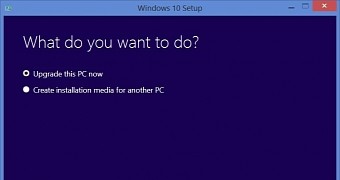Microsoft wants as many users as possible to upgrade to Windows 10, but it’s no secret that there were many cases when PCs couldn’t install the new operating system because of various errors.
That’s why Microsoft is now providing IT pros with documentation on how to resolve the common Windows 10 upgrade errors, offering not only details on upgrade error codes, but also quick fixes for the problems that users typically experience when upgrading to the new OS.
Unfortunately, however, some of these recommendations rarely make a difference, as they are the general advises that Microsoft engineers or MVPs post on Community forums. For instance, Microsoft recommends to check all hard drives for errors and attempt repairs, restore and fix system files, update Windows, remove antivirus software, uninstall nonessential software, and update firmware.
Diagnosing error messages experienced during upgrade
The error diagnosis section of the documentation, however, is expected to come in much handier because they help IT pros determine the cause of a problem using the error message displayed on the screen.
“Some result codes are self-explanatory, whereas others are more generic and require further analysis. ERROR_DISK_FULL indicates that the hard drive is full and additional room is needed to complete Windows upgrade. The message STATUS_SOME_NOT_MAPPED is more ambiguous, and means that an action is pending. In this case, the action pending is often the cleanup operation from a previous installation attempt, which can be resolved with a system reboot,” Microsoft notes.
Windows 10 is already installed on more than 20 percent of desktop computers out there, and Microsoft expects this share to increase in the coming months, as more enterprises complete the piloting stage and start the deployment process.
Without a doubt, documentation like this can assist IT professionals in upgrading systems in their networks to Windows 10, especially in the cases where app compatibility could lead to bigger deployment issues.

 14 DAY TRIAL //
14 DAY TRIAL //